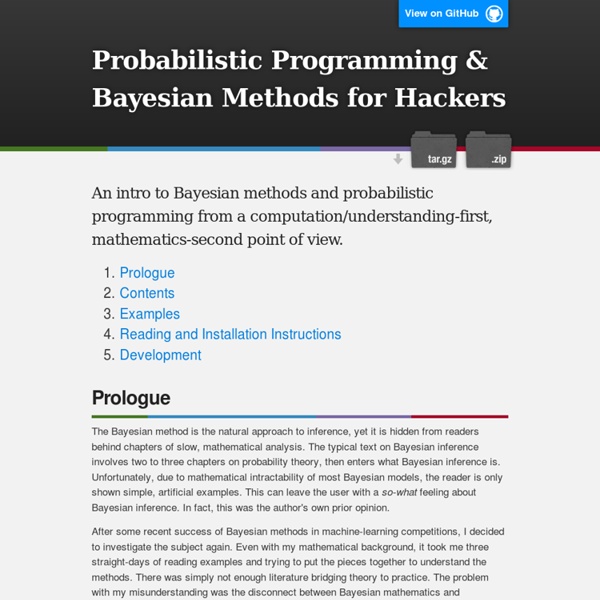Bayesian Methods for Hackers

Neural networks and deep learning
The human visual system is one of the wonders of the world. Consider the following sequence of handwritten digits: Most people effortlessly recognize those digits as 504192. That ease is deceptive. The difficulty of visual pattern recognition becomes apparent if you attempt to write a computer program to recognize digits like those above. Neural networks approach the problem in a different way. and then develop a system which can learn from those training examples. In this chapter we'll write a computer program implementing a neural network that learns to recognize handwritten digits. We're focusing on handwriting recognition because it's an excellent prototype problem for learning about neural networks in general. Of course, if the point of the chapter was only to write a computer program to recognize handwritten digits, then the chapter would be much shorter! Perceptrons What is a neural network? So how do perceptrons work? That's all there is to how a perceptron works! is a shorthand.
Related:



